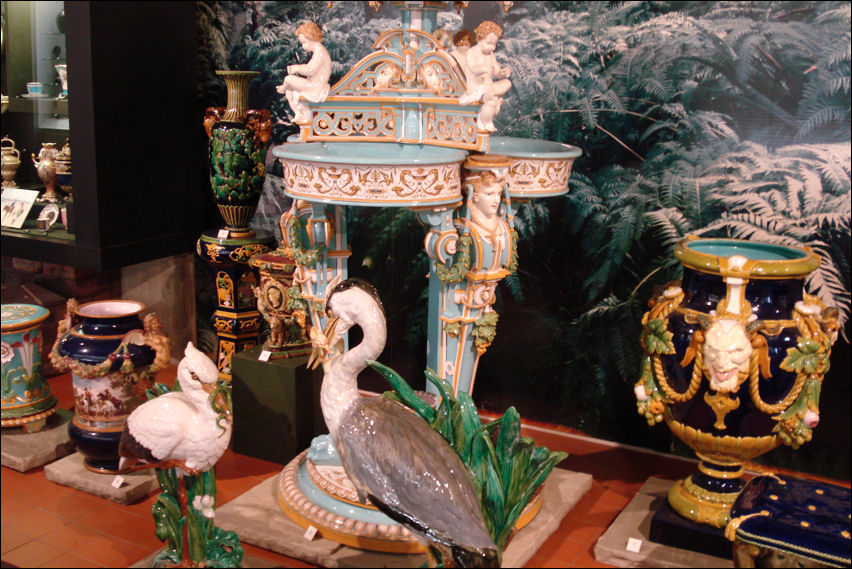![]()
|
|
|
|
|
Stoke-on-Trent - photo of the week |

Minton - Figure of a Peacock, modelled by Paul Comolera in 1873
|

| Victorian Majolica was
originated by Mintons Ltd, who exhibited it at the Great Exhibition of
1851 under the name Palissy ware. The debt to the eccentric 16th century
potter Bernard Palissy is obvious from its naturalistic plant and animal
motifs moulded in relief and splashed with bold colour and clear glazes. Mintons had for some time been making tin-glazed pottery (which is opaque, white and shiny and painted in color) somewhat in the style of Renaissance Italian maiolica, which they called majolica ware, anglicizing the Italian maiolica. |

| The
founder of Mintons of Stoke-on-Trent, was Thomas Minton - Somewhere
about 1788 or 1789 he made up his mind to quit London and settle at
Stoke,
where for a time he
continued to work as an engraver, at one of the Bridge houses which had
been built by Thomas
Whieldon, the first partner of Wedgwood. Before 1799, Thomas Minton produced a superior earthenware body which he described variously as stone china, opaque china, and feldspar china, and before the end of the 18th century bone china had been produced.
Herbert Minton's active participation in the firms affairs over a period of fifty years resulted in raising it to prosperity and fame, as we may judge from the fact that the number of employees grew from 50 to 1,500 and the volume of exports from 1840 to 1858 increased nearly five-hundred per cent. His American trade was much augmented after his visit in 1853 to the New York Exhibition. Two years later his exhibits of 'Majolica' ware at Paris won for him the Legion d'Honneur at the hands of Napoleon III. But by this time he was getting old and he retired in 1856. With his departure the direct Minton line was broken and he died in 1858. Hollins and Campbell carried on in partnership for another ten years, when they split up, Hollins devoting himself to the making of tiles, as Minton, Hollins and Co., while Campbell carried on the china works.
|